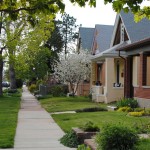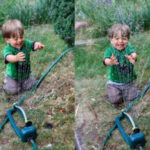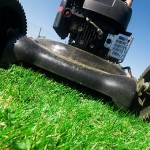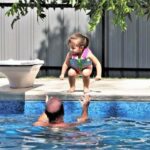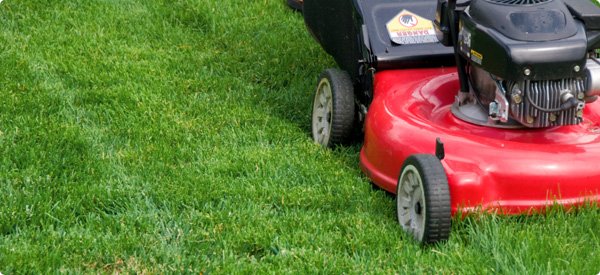
The heavy snow is headed out of town, and with weather heating up it’s time to start thinking about lawn care in Denver. With sunny skies in the forecast, spring fever will be easy to catch. Start with these five steps to prep your lawn to be healthy and green this spring.
1. Mowing
Photo: Tobin Lawn and Landscape
When mowing be sure to keep the one-third rule in mind in order to maintain a strong and healthy lawn. The one-third rule states that you should never mow more than one-third of the leaf blade during a single mowing session. For example, Kentucky Bluegrass is one of the most common grass types in Colorado and is recommended to be kept at 2 inches. This means that the lawn should not exceed 3 inches before it is mowed back down to 2 inches.
Cutting more than one-third of the blade will result in a weaker plant and ultimately will inhibit the growth of the root and develop a shallow root system. A shallow root system will become more susceptible to diseases, insect damage and drought, eventually killing the grass.
2. Keep the Clippings
Photo: Organic Farming Report
Despite popular belief, grass clippings do not need to be removed from the lawn. Grass clippings decompose into your lawn and recycle valuable nutrients, which ultimately reduce the need for fertilization. As long as the grass is being mowed frequently enough, there should not be large clumps of grass remaining on the lawn. If the yard is overgrown, then large clumps from the clippings may form and should then be removed to prevent harm to the lawn.
3. Watering
Photo: Pennington
When watering your lawn, you want to be sure to not overdo it; the roots have to be able to take in oxygen as well. To ensure that your lawn gets the right amount of water, water only when your yard is dry instead of on set days. To figure out the amount of moisture in your lawn, just insert a screwdriver about 3 inches into the soil. Wipe the screwdriver on a dry paper towel; if the soil is damp then there is no need to water, even if the surface of your lawn looks dry.
4. Aeration
Photo: Green Lawn Project
Aeration is a great way to kickstart your lawn by allowing better water infiltration and more oxygen flow, and alleviating soil compaction. The best time to aerate is in the fall or spring when it is not cold. Aeration removes 2- to 3-inch plugs from the lawn and deposits them onto the lawn. Before aeration, you should water the lawn till moist so the plugs are pulled out long enough versus the lawn being too dry and causing the plugs to break off.
5. Fertilization
Photo: Be Fresh Water Friendly
The best time to begin fertilization in Denver is May. When choosing a fertilizer, it is best to choose one with nitrogen unless the grass has begun to turn yellow, then a fertilizer with iron would be best. It’s best to stay away from weed and feed fertilizers unless the yard has lots of weeds; even them, limit the applications. The weed killer in weed and feed fertilizers affects “broadleaf plants,” which are trees, shrubs and flowers. If the weed and feed is applied to the entire yard, then your landscape plants will take up the weed killer through their roots and eventually be weakened.
Following the first application of fertilizer, it is best to fertilizer again in either August or September and then once more in either October or November. These three applications will put your yard on track to looking great all year.







